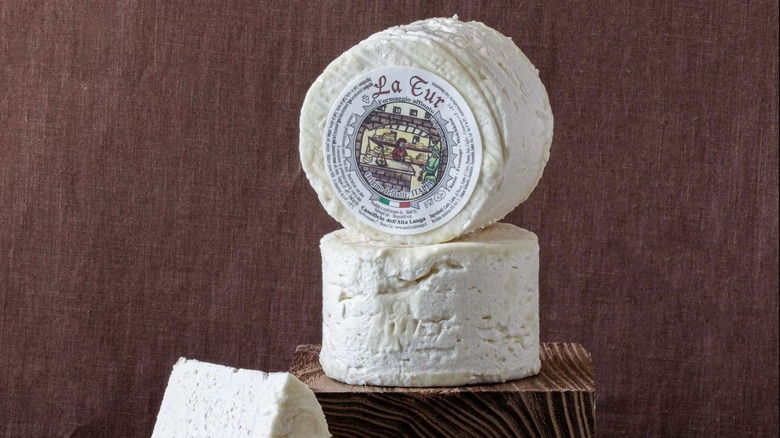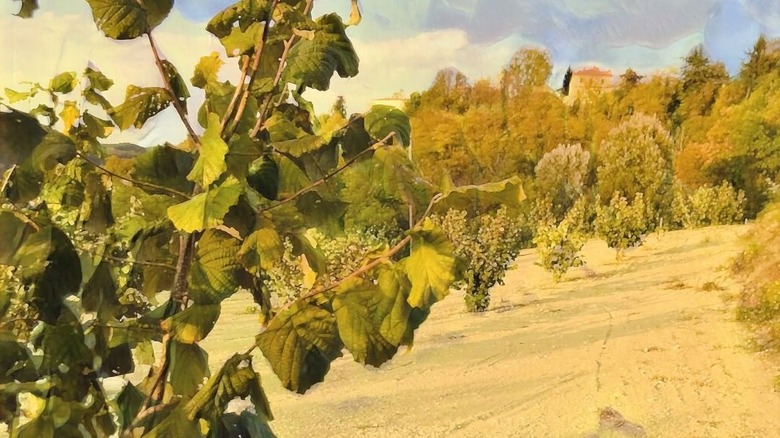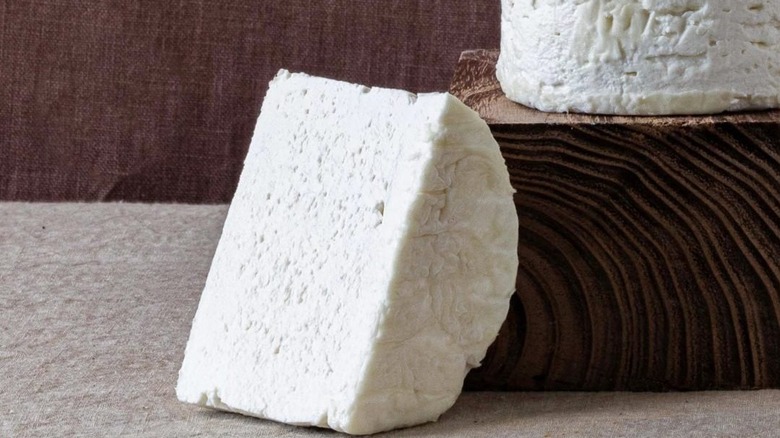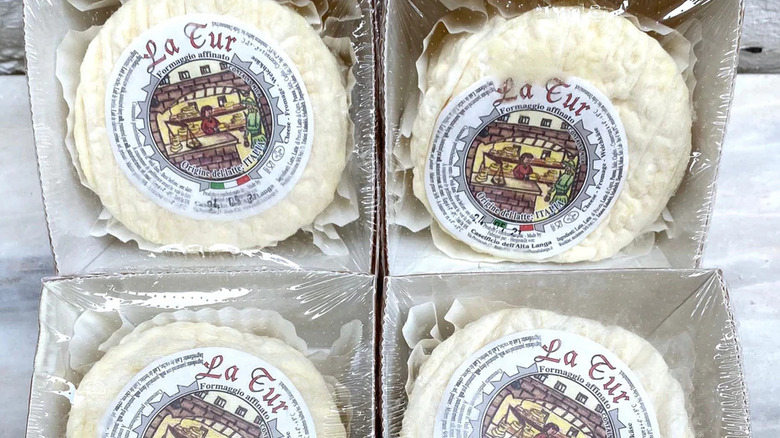La Tur: Northern Italy's Often Overlooked Creamy Cheese
Picture it! You're at a dinner party, and the host brings out this amazing cheese board. You spot the ones you know. There's an aged cheddar, a block of Gorgonzola, and the other usual suspects. But, there's one little nugget that you just can't seem to place. It looks like brie, only smaller, and its rind looks different. If only there was a cheese identification app! Resisting the urge to pull out your phone for a quick Cheezus search, you dig in.
When your host serves up flutes of her best sparkling wine, you know you've chosen well. You take your first bite and sip of the evening with a not-so-silent purr. Oh, Cheezus! You do declare that Michelangelo himself would've definitely devoured such a masterpiece. With a bit of digging, maybe you'll need to drop some new 411 on your local cheesemonger. After all, serving La Tur at your own soirees from this point forward is going to be a thing.
Where does La Tur cheese come from
Bordering France, Switzerland, and Lombardy, the Piemonte region is a gateway to the Alps (the word Piemonte literally means the foot of the mountains). The land is hilly, where hearty grape varietals such as Barbera and Nebbiolo thrive. And among those hills are the Langhe, where cheese production is a major part of its economy. Like the grapes, herds of livestock thrive here because of the mineral-rich clay soil, to which you can attribute La Tur's notable earthy qualities.
Made from pasteurized cow's, goat's, and sheep's milk, La Tur expresses the terroir of its homeland in the northern Italian region of Piemonte — specifically in the town of Alba, where Barbera d'Alba wine also comes from. Even more specifically, La Tur is made in the small village of Bosia by a family of cheesemakers dating to 1881 – Caseficio dell'Alta Langa.
What are the characteristics of La Tur
The rind's ripply surface might remind you of another French favorite — Crottin de Chavignol. La Tur is just as smooth as brie, making it natural for spreading on party crackers. And much like its French counterparts, the Italian cheese can be served at room temperature. It's dense yet creamy and with NYC's famous chees shop Murray's likening it to "a scoop of ice cream; decadent and melting from the outside in."
The lightly bloomed rind gives way to a center that you'd swear is mousse if blindfolded. A Robiola style of soft-ripened cheese, La Tur is so fluffy because the cheese curds are drained, as opposed to being pressed. It's then aged in the mold for just 10-15 days before packaging.
But how does it taste? Funky yet not pungent, while earthy and perhaps even citrusy flavors come to mind: Closer to the rind, you'll pick up goaty flavors, while the cloud-like center is where light notes of citrus linger. It's the blended milk that partially lends such a complex profile to La Tur.
Where to get La Tur and how to store it
If you're traveling through Northern Italy, Caseficio dell'Alta Langa should be a must-stop and can ship within Italy. Otherwise, it's probably not worth the hassle at customs.
La Tur is often overlooked by American cheesemongers. So, count yourself lucky if yours keeps it in stock. Still, if you're having trouble finding a cheese shop near you that sells La Tur, Cheese.com features a locator. Also, there are several online shops that you can order from. For example, the New York City-based Murray's carries La Tur when available. Just be forewarned, as the site mentions, "We recommend you get back-up; La Tur is always the first to go at a party."
Once you get your hands on this rare jewel of a cheese, treat it with kindness. It's young and needs some loving care. Although, it can last several weeks stored correctly in the refrigerator. If you choose to store it, opt for parchment paper for wrapping. If you need it to keep longer than a few weeks, La Tur can be frozen. Just slowly thaw it when you're ready to serve it. Regardless of your storage choice, bring it to room temp for the best La Tur cheese tasting ever.



